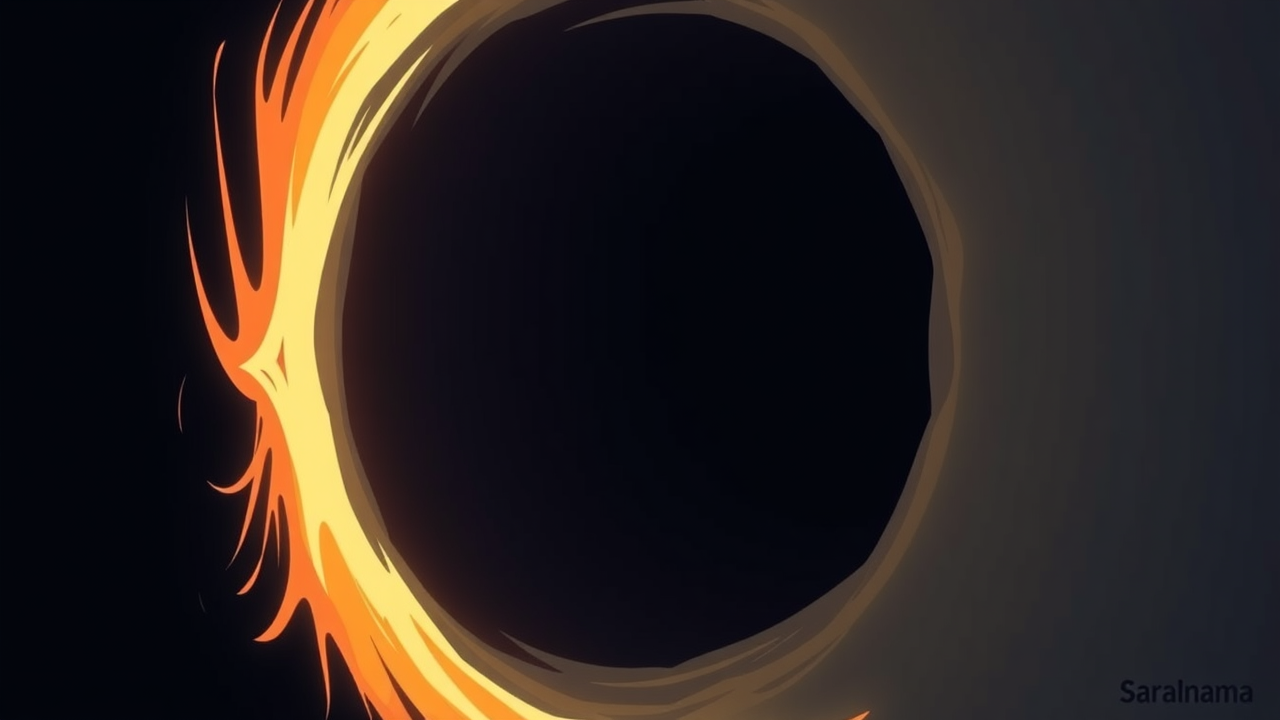The James Webb Space Telescope (JWST) has discovered an extraordinary cosmic trail in a distant galaxy, revealing potential evidence of a massive black hole's violent passage. Located approximately 31 million light-years away in the constellation Leo, this 20,000-light-year trail provides unprecedented insights into galactic dynamics and celestial phenomena. Astronomers have uncovered a remarkable linear structure within galaxy NGC 3627 that suggests a powerful cosmic object traversed through space, leaving behind a dramatic scar rich in gas and dust.

Massive Black Hole's Cosmic Journey Revealed
Scientists analyzing data from the PHANGS survey have identified an extraordinary trail spanning nearly 20,000 light-years in length and 650 light-years wide. The object responsible for carving this massive scar is estimated to be approximately 10 million times the mass of our sun. Its incredible gravitational pull appears to have squeezed gas out of the galactic disk, creating a distinctive linear contrail that offers a unique window into cosmic dynamics. Researchers suggest two potential explanations for this phenomenon: a massive black hole or the dense core of a dwarf galaxy moving at remarkable speeds.
Technological Breakthrough in Celestial Observation
The James Webb Space Telescope, working in collaboration with the Atacama Large Millimeter/submillimeter Array (ALMA), has been instrumental in capturing this remarkable discovery. By combining advanced imaging techniques, scientists could trace the detailed characteristics of the galactic trail. The data confirmed the presence of significant dust concentrations and revealed rich deposits of carbon monoxide gas. This breakthrough demonstrates how modern astronomical instruments can provide unprecedented insights into complex cosmic events that occurred millions of years ago.
Timing and Historical Context of the Cosmic Event
The astronomical event is estimated to have occurred approximately 20 million years ago, which is relatively recent in cosmic timescales. This timeframe provides researchers with a compelling snapshot of galactic interactions and potential black hole movements. While the exact nature of the object remains uncertain, scientists are excited about the possibilities. Future observations with increasingly sensitive equipment might help definitively identify whether a supermassive black hole or a dwarf galaxy core created this extraordinary galactic scar.
Detailed Characteristics of the Galactic Trail
The trail discovered in NGC 3627 represents one of the most clearly defined cosmic scars ever observed. Its remarkable characteristics include a linear structure stretching across an immense distance, with a width remarkably narrow compared to its length. The trail's composition of gas and dust suggests a violent and powerful passage of a massive cosmic object. Astronomers Mengke Zhao and Guang-Xing Li, who led the research, emphasized the significance of this discovery in understanding complex galactic interactions and potential black hole dynamics.
Implications for Understanding Cosmic Mechanics
This discovery provides scientists with crucial insights into how massive celestial objects interact and move through galaxies. The trail's existence suggests potential mechanisms of galactic transformation that were previously difficult to observe. By studying such phenomena, researchers can develop more sophisticated models of cosmic evolution, black hole behavior, and the complex interactions between different astronomical structures. The James Webb Space Telescope continues to prove its exceptional capabilities in revealing hidden cosmic narratives.
Scientific Methodology and Research Approach
The research utilized data from the PHANGS survey, employing advanced telescopic technologies to analyze subtle cosmic structures. By combining observations from the James Webb Space Telescope and ALMA, scientists could detect minute details in the galactic trail. This collaborative approach demonstrates the importance of using multiple sophisticated instruments to validate and enhance astronomical discoveries. The methodology involved careful data analysis, spectroscopic examination, and comparative studies to understand the trail's origin and characteristics.
Potential Future Research Directions
Scientists anticipate that future observations with more advanced and sensitive equipment will provide definitive answers about the trail's origin. Potential research directions include more detailed spectroscopic analysis, comparative studies of similar galactic structures, and developing more precise computational models. The discovery opens up exciting possibilities for understanding black hole dynamics, galactic interactions, and the complex mechanisms driving cosmic evolution.
Broader Astronomical Significance
The discovery of this massive galactic trail represents more than just a singular observation. It symbolizes humanity's expanding understanding of the universe's complex mechanisms. By revealing these hidden cosmic narratives, researchers are gradually unraveling the intricate processes that shape galaxies, black holes, and the broader cosmic landscape. The James Webb Space Telescope continues to be a critical instrument in pushing the boundaries of our astronomical knowledge.
Source: Link
